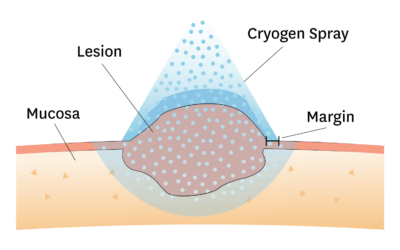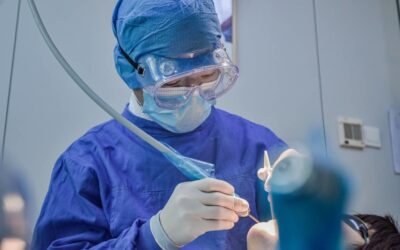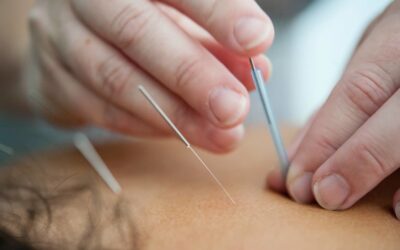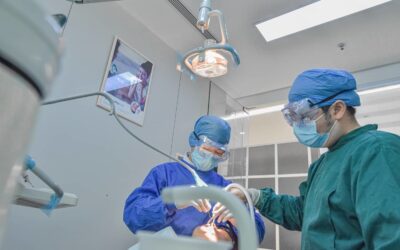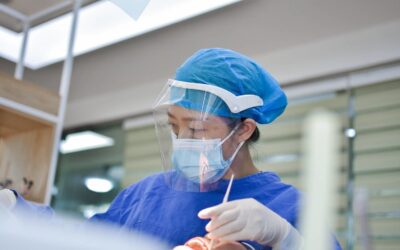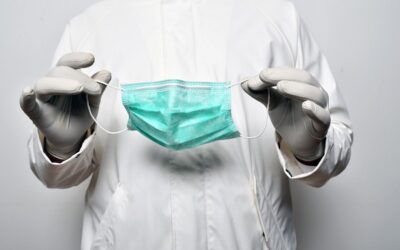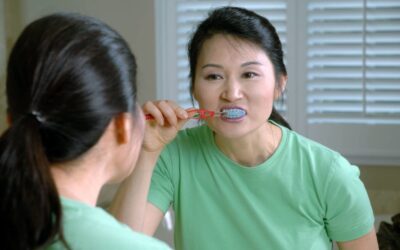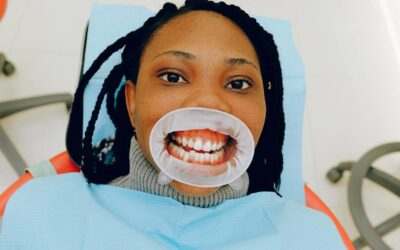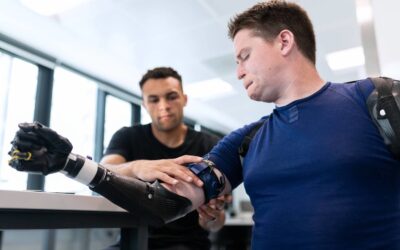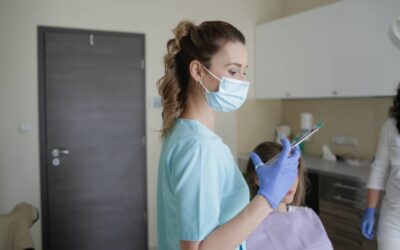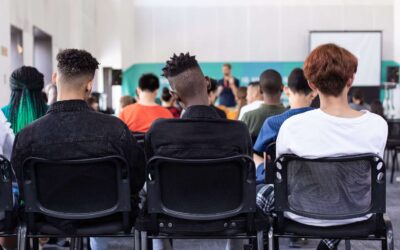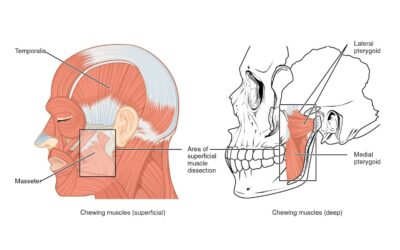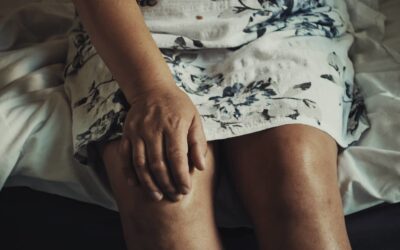Insights
Stay up-to-date with the latest news and ideas in the fields of Orofacial Pain and Oral Medicine, Geriatric Dentistry, Oral Pathology and Radiology, Pain Medicine and Pain Science, and Community Oral Health.
Step-by-Step Instructions for Performing Oral Cryotherapy
Nov 24, 2020
Oral Cryotherapy Oral cryotherapy is a very safe, easy to perform, and relatively inexpensive treatment for various selected oral lesions. You should never perform cryotherapy unless you know the diagnosis of the lesion you to freeze. HPV is associated with...
How to Perform a Jaw Bone Biopsy
Nov 19, 2020
What is a jaw bone biopsy? When you use the term “bone biopsy,” this could mean you are taking a piece of bone or you are taking tissue that resides inside a bone. There are two approaches for a bone biopsy. A closed/needle bone biopsy involves inserting a...
Acupuncture May Help Alleviate Osteoarthritis Pain
Nov 18, 2020
This article was originally published on Confronting Chronic Pain by Dr. Steven Richeimer. New research emerged regarding the use of acupuncture to help with chronic pain caused by osteoarthritis. The information shared in the research study further points to the idea...
How to Perform an Oral Cyst Aspiration and Cytologic Smear
Nov 11, 2020
Cyst Aspiration A cyst is a membranous sac or cavity of abnormal character containing fluid. Indications for an Oral Cyst Aspiration For a jaw bone cyst lesion or any large soft tissue oral mucogingival cyst, aspirate the cyst aspiration. To help diagnosis of...
Vitamin D Levels May Affect Chronic Neuromuscular Pain
Nov 9, 2020
This article was originally published on Confronting Chronic Pain by Dr. Steven Richeimer. Many people suffer from what is referred to as non-specific neuromuscular pain. They are in pain but can’t pinpoint a specific place that hurts, and doctors may not be...
Minor Salivary Gland Biopsy for Diagnosing Sjogren’s Syndrome
Nov 3, 2020
Minor Salivary Gland (MSG) Biopsy Minor salivary gland (MSG) biopsy of the lower lip mucosa is used to confirm the diagnosis of Sjogren’s syndrome. Sjogren’s is a chronic autoimmune disorder involving the destruction of glandular tissue. Sjögren's syndrome can cause...
How to Conduct an Oral Cavity Punch Biopsy
Oct 27, 2020
What is a punch biopsy? An oral cavity punch biopsy is considered the primary technique to obtain diagnostic, full thickness skin specimens. It is performed using a circular blade or trephine attached to a pencil-like handle. The instrument is rotated down through...
How to Perform an Oral Biopsy
Oct 22, 2020
A biopsy is defined as the sampling or removal of tissues or liquids from the body for examination, in order to determine the existence or cause of a disease. A biopsy is strongly recommended for most of the lesions that persist for more than two weeks which...
An Intersectional Approach to Treating Chronic Pain
Oct 19, 2020
The medical records of chronic pain patients generally identify patient demographics including race, age, gender, or employment. Sometimes, the patient’s gender orientation status is also included. Except for racial/ethnic-specific reference intervals for...
COVID-19’s Impact on Homeless Populations in Los Angeles
Oct 13, 2020
As COVID-19 continues to threaten communities across the world, the homeless population is facing a "crisis in a crisis." Below is a presentation I've put together on the state of homelessness in Los Angeles, the impact COVID-19 has had on this population, and a few...
COVID-19’s Impact on Nursing Home Residents
Oct 7, 2020
Today we're talking about COVID-19's impact on nursing home residents that goes beyond what you might have heard in the news. Please find the recorded lecture, the PowerPoint presentation, and a formatted transcription of the lecture below. Don't have time to read...
Dental Hygiene Tips During the COVID-19 Pandemic
Sep 30, 2020
Keeping good oral health during the pandemic is not only important, but a critical message that must be adopted in every community. Read on to discover dental hygiene tips to stay healthy during the pandemic, and for caring for a COVID-19 positive patient. Don't have...
Trigger Point Mapping: Theory & Step-by-Step Technique
Sep 23, 2020
What is a trigger point? A trigger point is due to sensitized sensory nerves within a taut band of a muscle that when squeezed generates local and referred pain. The cause of a taut band is a hyperactive motor nerve branch, which generates sustained contraction in the...
How to Support Geriatric Patients with Dementia and COVID-19
Sep 15, 2020
This content was originally presented during the Herman Ostrow School of Dentistry of USC's 2020 Geriatric Boot Camp. The original presentation can be found below, as well as an adapted write-up of what we covered in our session. Don't have time to read the full...
How to Administer a Gingival Cold Test
Sep 9, 2020
This test is utilized when you have a focal, intraoral, probable neuropathic pain disorder involving a branch of the trigeminal nerve with palpable gingival allodynia/hyperalgesia and no obvious, local dental pathology exists such as tooth fractures, periapical...
Post-Amputation Pain Management: New Research & Treatments
Sep 8, 2020
This article was originally published on Confronting Chronic Pain by Dr. Steven Richeimer. According to the Amputee Coalition, there are nearly 2 million people in the U.S. who are living with limb loss. What many people who don’t have limb loss may...
How to Perform a TMJ Injection
Sep 3, 2020
TMJ injections are performed with corticosteroid and anesthetic to produce a two-fold effect: one reduce inflammation with the corticosteroid (triamcinolone acetonide) and two produce anesthesia or pain relief using lidocaine 2% without epinephrine. ...
How Does Chronic Pain Impact Adolescents in School?
Aug 31, 2020
This article was originally published on Confronting Chronic Pain by Dr. Steven Richeimer. Millions of people around the U.S. suffer from chronic pain. Adults have more control over their pain management regarding treatment options, when they feel they need...
How to Measure Orofacial Pain With a Muscle Tenderness Exam
Aug 27, 2020
In this article, we review ways to assess muscle tenderness and pain. Common abnormalities of the masticatory muscle include injection induced myositis, myofascial taut band, trigger point, hypertrophy, spasms, etc. Note: Prior to each procedure, introduce...
Does Emotional Approach Coping Ease Chronic Pain?
Aug 25, 2020
This article was originally published on Confronting Chronic Pain by Dr. Steven Richeimer. It’s widely understood that those who experience chronic pain have a higher rate of depression. The pain can overtake your life and steal your joy. People often experience a...
How to Perform an Agar Slant Culture Test for Fungal Infections
Aug 17, 2020
The Sabouraud Agar Slant Culture test is used when fungal overgrowth of the oral tissues is suspected, and is used to confirm the diagnosis of a fungal infection. Other adjunctive methods for the diagnosis of oral candidiasis include exfoliative cytology using...
Treating Chronic Low Back Pain with Functional Restoration Programs
Aug 12, 2020
This article was originally published on Confronting Chronic Pain by Dr. Steven Richeimer. Chronic low back pain is one of the most common pain conditions that keep people from working. Those who suffer from this type of condition experience paraspinal muscle...
Does Manual Therapy Massage Help Women with Fibromyalgia?
Aug 6, 2020
This article was originally published on Confronting Chronic Pain by Dr. Steven Richeimer. According to the National Fibromyalgia & Chronic Pain Association, there are 10 million people in America who have fibromyalgia [1]. It’s estimated that around 75-90%...
How to Conduct a Cranial Nerve Examination
Aug 5, 2020
The following equipment is required for a Cranial Nerve Examination: Cotton ball Safety pin Pen torch (source of light) Tongue blade Tuning fork (512 Hz) 1.) Olfactory Nerve (I) The olfactory is a sensory nerve, and damage in the nasal epithelium or the basal...

